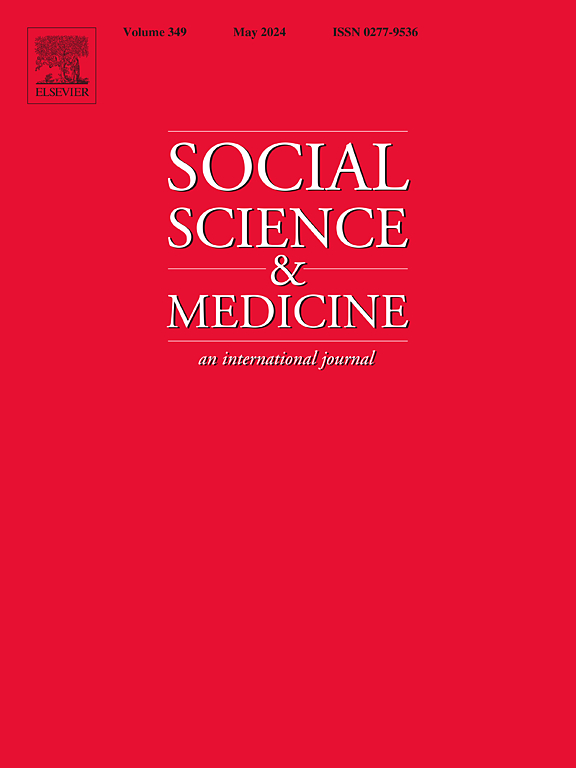澳大利亚保健和社会服务提供者对生殖强迫的人际和结构形式的看法。
IF 5
2区 医学
Q1 PUBLIC, ENVIRONMENTAL & OCCUPATIONAL HEALTH
引用次数: 0
摘要
本研究探讨了澳大利亚卫生和社会服务提供者如何描述生殖强迫(RC)的人际和结构形式,以及他们如何从支持RC受害者-幸存者的经验中看待这些形式在实践中的相互作用。在一个有助于区分人际关系和结构性RC的适应性社会生态框架的指导下,我们对25名全科医生、护士、社会工作者、家庭暴力工作者和妇产科医生进行了半结构化访谈。反身性主题分析确定了三个主题:(1)冲突和控制:由恐惧驱动,展示了当生殖冲突与恐惧和权力失衡相结合时,人际胁迫如何出现,促使隐瞒或顺从;(2)“应该”的路径,捕捉了显性和隐性强迫是如何从分层的人际和结构压力中产生的,包括文化、社会和制度规范,这些规范规定了谁应该或不应该生育孩子,结构条件往往使人际控制成为可能;(3)未言明的、非强制的、但被深刻理解的压力,描述了隐性的强迫,内化的压力,通常植根于文化和社会期望,促使个人自我调节他们的生育选择,或在受限的情况下做出保护性的决定。在这三个主题中,RC被理解为一种关系和社会嵌入的现象,在生殖决策中不受强迫的真正自由不仅取决于没有直接干预,还取决于有空间和支持结构来自由、安全地做出选择,并与自己的价值观保持一致。未来的研究必须以受害者-幸存者的经历为中心,以深化这一概念,并探索RC的人际和结构形式如何在生活现实中交叉。本文章由计算机程序翻译,如有差异,请以英文原文为准。
Australian health and social service providers’ perspectives on interpersonal and structural forms of reproductive coercion
This study explored how Australian health and social service providers describe both interpersonal and structural forms of reproductive coercion (RC), and how they perceive these forms to interact in practice from their experiences supporting RC victim-survivors. Guided by an adapted socio-ecological framework that helped distinguish interpersonal and structural RC, we conducted semi-structured interviews with 25 general practitioners, nurses, social workers, domestic violence workers, and obstetrician/gynaecologists. Reflexive thematic analysis identified three themes: (1) Conflict and control: being powered by fear, demonstrates how interpersonal coercion emerges when reproductive conflict is coupled with fear and power imbalances, prompting concealment or compliance; (2) The path of ‘shoulds’, captures how explicit and implicit coercion arise from layered interpersonal and structural pressures, including cultural, societal and institutional norms that dictate who should or should not bear a child, with structural conditions often enabling interpersonal control; and (3) Unspoken, unenforced, yet deeply understood pressure, describes tacit coercion, internalised pressures often rooted in cultural and societal expectations that prompt individuals to self-regulate their reproductive choices or make protective decisions within constrained circumstances. Across the three themes, RC was understood as a relational and socially embedded phenomenon, where true freedom from coercion in reproductive decision-making depends not only on the absence of direct interference but also on having the space and supportive structures to make choices freely, safely, and in alignment with one's own values. Future research must centre victim-survivor experiences to deepen this conceptualisation and explore how interpersonal and structural forms of RC intersect in lived realities.
求助全文
通过发布文献求助,成功后即可免费获取论文全文。
去求助
来源期刊

Social Science & Medicine
PUBLIC, ENVIRONMENTAL & OCCUPATIONAL HEALTH-
CiteScore
9.10
自引率
5.60%
发文量
762
审稿时长
38 days
期刊介绍:
Social Science & Medicine provides an international and interdisciplinary forum for the dissemination of social science research on health. We publish original research articles (both empirical and theoretical), reviews, position papers and commentaries on health issues, to inform current research, policy and practice in all areas of common interest to social scientists, health practitioners, and policy makers. The journal publishes material relevant to any aspect of health from a wide range of social science disciplines (anthropology, economics, epidemiology, geography, policy, psychology, and sociology), and material relevant to the social sciences from any of the professions concerned with physical and mental health, health care, clinical practice, and health policy and organization. We encourage material which is of general interest to an international readership.
 求助内容:
求助内容: 应助结果提醒方式:
应助结果提醒方式:


